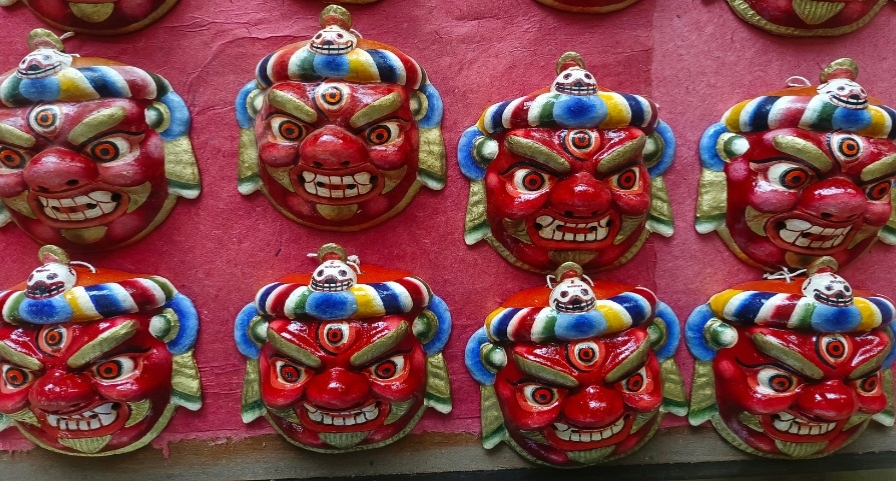Masks have been a significant expression of art and culture in various indigenous communities of India. Apart from holding great historical as well as traditional value for the communities that are associated with them, they also help us to understand the unique cultures of these communities.
While many traditional masks are used as decorations and objects of worship, some masks are also used as accessories in the elaborate costumes of some traditional dance forms performed by diverse indigenous communities.
Let us have a look at some of these spectacular Indian traditional masks.
Chhau Masks

Chhau masks are an integral part of the Chhau dance form. It is a folk dance hailing from the states of Odisha, Jharkhand, and West Bengal. The dance was traditionally performed by men of the tribal population in the area. However, in recent years, women have also been known to perform this dance.
The Chhau masks are known to be a significant accessory for Chhau dancers. The masks are generally colourful and elaborate in form. Primarily made out of clay, papier mache and wood, these masks are made by rural artists of the community.
Since the Chhau dance incorporates various stories of Hindu deities such as Shiva and Durga, the Chhau masks resonate with the same stories. The masks are also made in resonance with Hindu epics and other popular tribal characters.
Cham Masks
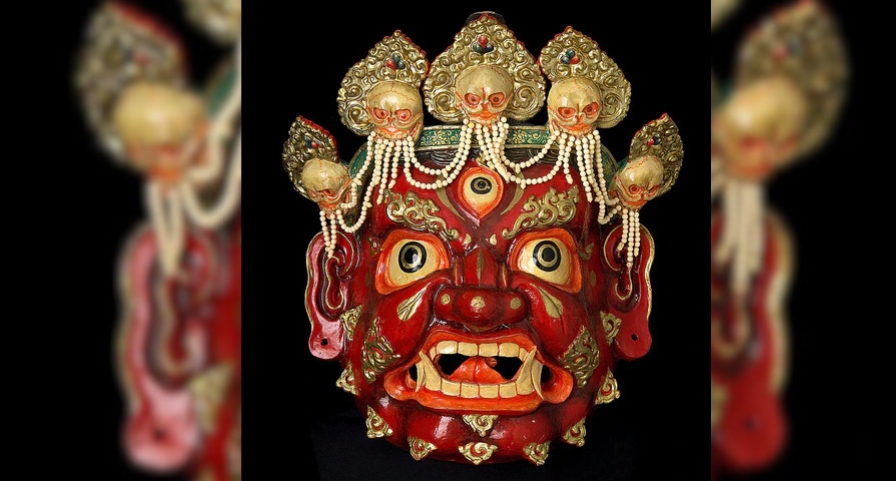
Cham masks are often used in Cham dance performances, emerging from the regions of Bhutan, Tibet, Nepal and India. These ornate masks are believed to harbour wrathful and irate deities known to protect against the evil forces, and instill fear in them.
Due to the enraged nature of the deities, which the Cham masks are used to depict, these masks project intimidating expressions. The masks are usually made of clay and constitute defined noses, eyes, eyebrows, big teeth and beards.
The Cham masks are also known to be a symbol of peace and tranquillity. They are used in Vajrayana Buddhism (also known as Tibetan Buddhism) as ritualistic objects. The deities that are understood to be residing in these masks are also believed to protect one from obstacles encountered in an individual’s journey to enlightenment.
Cheriyal Masks
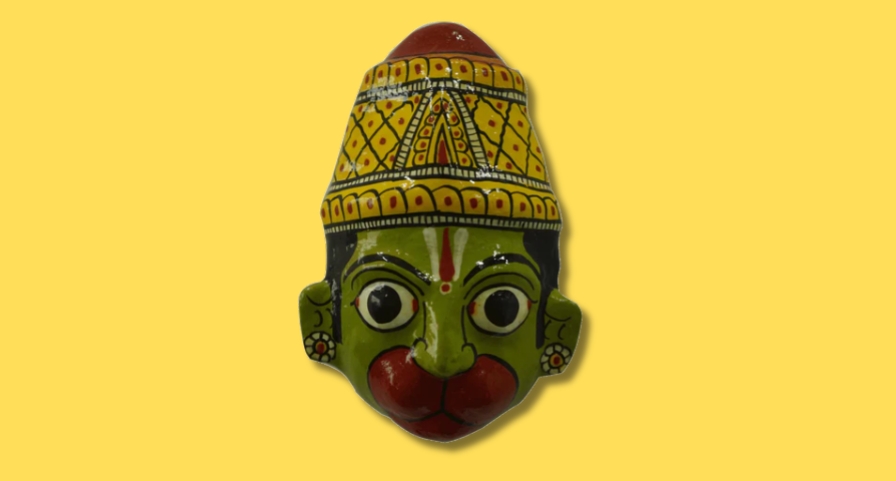
Cheriyal masks and busts originated from the region of Cheriyal village of Telangana. The Cheriyal masks are generally used during folk theatre performances and storytelling. Characters from Hindu epics such as the Ramayana, Mahabharata, and Garuda Purana, are often represented by these masks and busts.
Cheriyal masks are made using unique techniques that include five steps: moulding, drying, decorating, smoothening, and painting. The mould is made out of wood, coconut shells, sawdust and tamarind paste.
The vivid colours used are sourced from natural dyes obtained from various plants and minerals.
Dokra Masks
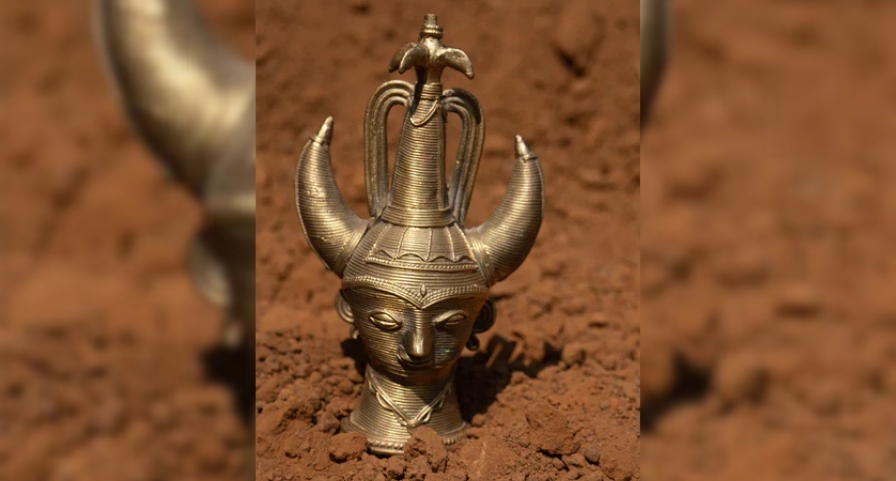
Dhokra metal works are a form of tribal art from West Bengal, Jharkhand, Odisha, and Chhattisgarh. This art is believed to be a legacy from the ancient times of the Harappan civilisation.
The name of this art form is derived from the Dhokra Damar tribes of West Bengal, who are known to be the traditional metal smiths of the region. Some of the main motifs draw inspiration from their daily tribal lives, nature, and mythology.
It is an age-old form of metal casting tradition that uses the lost wax technique. The artisans initially model the mask with clay and then proceed to layer it with coats of beeswax and resin. After designing intricate patterns on the wax, a clay mould is put over it and heated in a furnace.
This makes the wax melt away, hence the name ‘lost wax technique’. Molten metals such as bronze or brass are added to the now hollow structure. Once the metal cools off, the clay structure is broken to reveal the detailed metal mask.
Majuli Masks
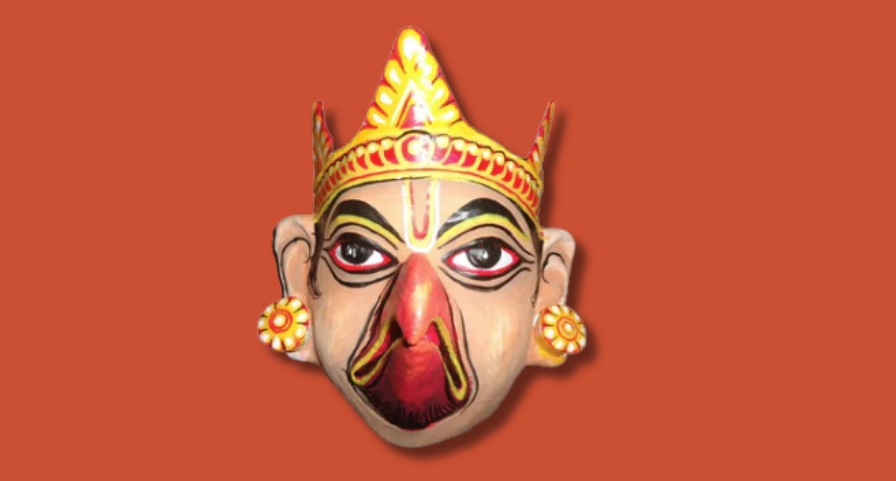
Majuli masks are important traditional artefacts of Assam. They originate from the Majuli island located on the Brahmaputra river.
These masks were introduced by the saint Srimanta Sankardeva, a 15th-century reformer of the neo-Vaishnavite tradition. In order to inspire people to follow Krishna bhakti (devotion to Lord Krishna), saint Sankardeva included masks to depict characters during theatrical performances.
The masks are used in Bhaonas – traditional theatrical performances where Hindu mythological stories are enacted by the actors wearing Majuli masks. Various characters from the Hindu epics are represented through these masks, such as gods, demons, animals, and birds.
Majuli masks have also recently been awarded the prestigious GI (Geographical Indication) tag. These masks are made with great precision and artistic skill using materials such as clay, dung, bamboo, wood, cotton, cloth and other naturally occurring elements.
Theyyam Masks
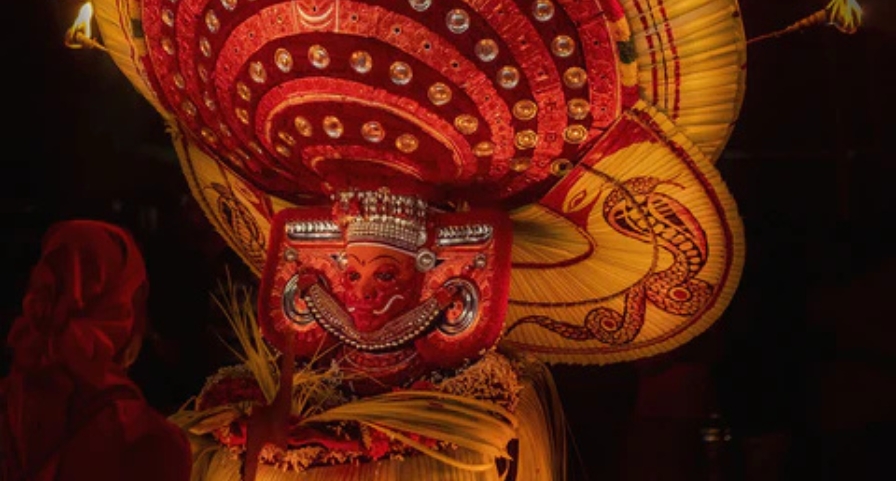
An integral part of the traditional Theyyam dance costume, the Theyyam masks are generally used to portray deities in the performances. The Theyyam dance is performed by various indigenous tribal communities of Kerala, such as Malayar, Pana, Vannan and Velan.
Theyyam masks are customarily known to be a combination of face painting and masks. These masks are characterised by enormous and heavily detailed headgear made using natural products.
Elements such as areca palm wood and leaves are used to create the structure of these elaborate masks. The colour scheme is usually vivid and in stark contrast to each other. The most commonly used colours are orange, white, yellow, red and black.
Wooden masks of Sikkim
An ancient craft from the state of Sikkim in India, wooden mask-making was initially promoted by the Buddhist monasteries in the region. These masks are generally made out of a light yet tough wood called Zaru shing (Zaru wood), which is a type of tree typically found in the higher altitudes of Sikkim.
Faces of gods, goddesses and animals are carved into these masks, portraying expressions of anger or serenity. People are known to wear these masks on special occasions such as festivals, religious ceremonies, or during traditional dances.
This story first appeared on MeMeraki.
The lead image on top shows Wooden masks of Sikkim, which are made out of a light yet tough wood called Zaru shing. (Photo courtesy MeMeraki)
Arushi Mishra is a passionate art enthusiast with a penchant for exploring different forms of art.
MeMeraki is India’s first culture tech platform, using technology to empower and accelerate the artisan creator economy. Their mission is to digitise every heritage art and craft of India to ultimately create sustainable livelihoods for artisans.

